I'm often asked about 70's Martins, particularly D-18 and
D-28's. The question usually goes like this: "I just bought (or am about
to buy) a 197x D-28. What sort of things should I look for?" A 1971
D-28 with all the typical 70's issues just landed on my bench and I decided to
photo document the evaluation. Here we go!
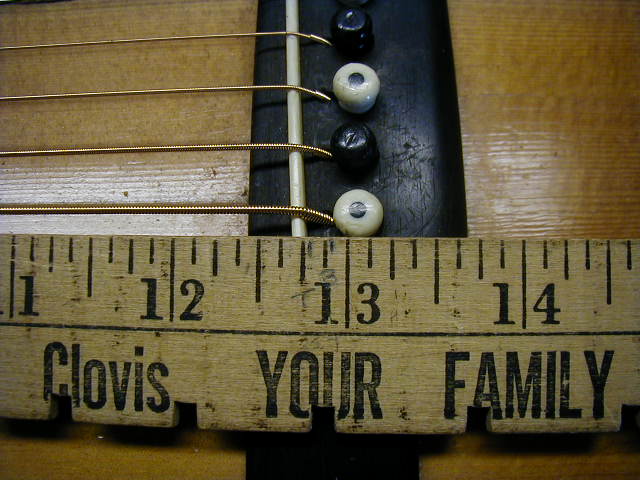 |
The first thing I do is check the saddle location. The "zero"
end of this ruler is resting in the middle of the 12th fret. The
penciled in "B" (for "bass") should be right in the middle of the saddle
at the spot where the low E crosses over. Likewise, the "T" is for
"treble". As you can see here, this saddle is over 1/8" off.
Sometimes I can re-route the saddle slot but in this case, the slot
needs to move too far back. This guitar is going to need a new
bridge, a new fingerboard, a shim under the neck, or the bridge scooted to get intonation
right. This saddle is so far off that I might have to use a
combination of solutions to get it right.
Options for dealing with 70's
bridges. |
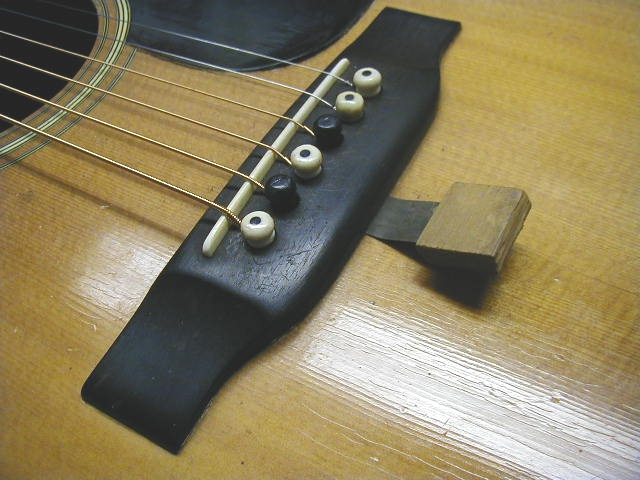 |
The bridge on this particular guitar is loose. That's a .004" feeler
gauge with about 1/8" under the bridge. No question that this
bridge is coming off. |
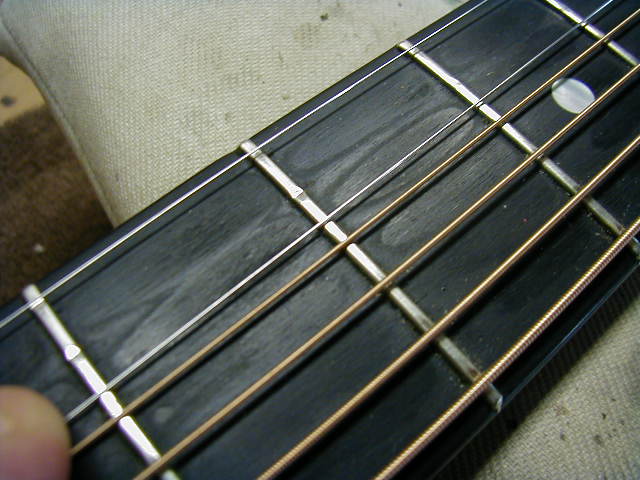 |
This guitar has worn frets that have been filed at least once and
have a flat-top instead of a rounded crown. There's nothing I can
do to help these frets and the guitar will not play right like this.
Fretting will be difficult due to the low height, and the resulting note
will be buzzy due to the flat-top making for a poor "bite" on the
string. Nothing to do here but re-fret and since all the frets are
flat-topped and low, I need to re-fret the entire fingerboard. |
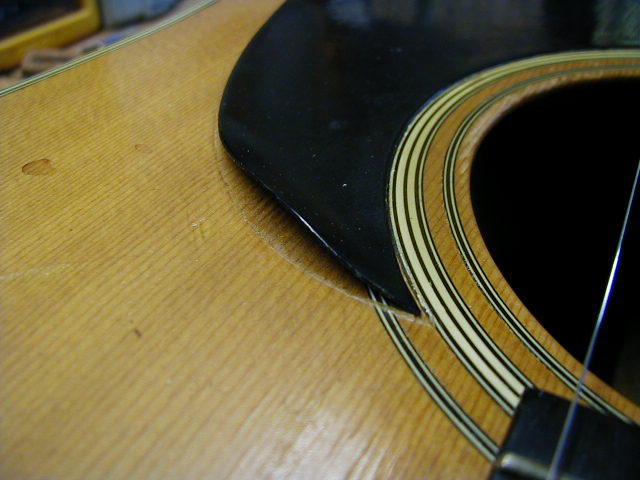 |
The old black pickguards were fastened directly to the wood.
Over time, they shrank and either pulled loose or caused cracks at
various places. This guitar has both- it has a typical crack under
the B-string (not shown) and it's warped and peeling off. This
one's warped too much to stick back down, so it's going to get a new
pickguard. |
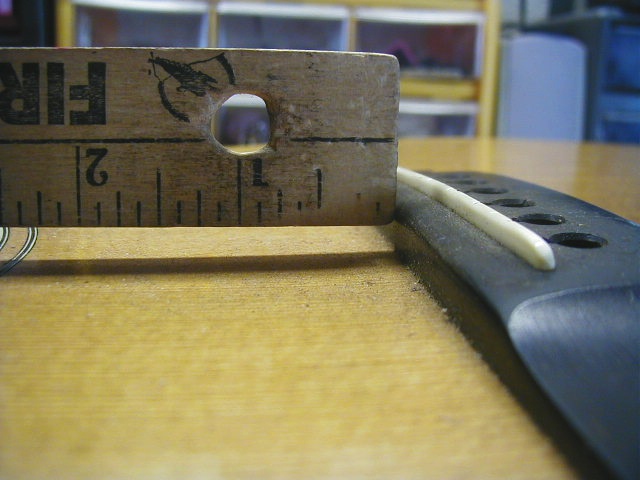 |
This guitar clearly needs a neck reset. A straightedge running
down the fingerboard falls well below the bridge and there's not even
string tension on the guitar. Under tension, it's going to fall
probably 50% lower than this. |
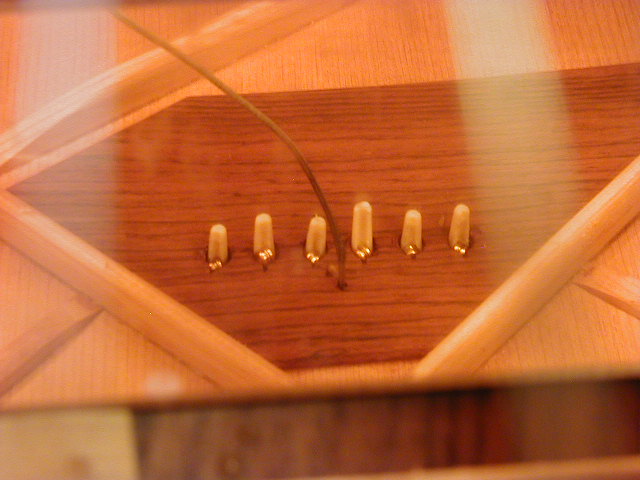 |
Inside the guitar we have the huge Indian RW bridgeplate that
Martin used in the 70's. The holes are worn and the ball end of
the strings were starting to pull thru the plate.
Whenever I see a bridge pulling off, I look at the
plate, and sure enough, this one's warped. I personally
don't like the "dark" tone of RW bridgeplates and much prefer the
neutral tone of maple. My preference would be to replace this
plate with a smaller maple or black locust plate.
This guitar (a different one) has an undersaddle pickup.
I intensely dislike undersaddle pickups. K&K is the way to go,
IMHO. |
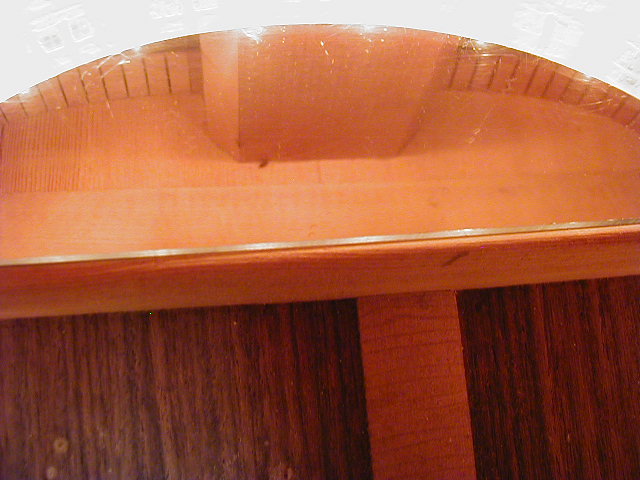 |
Still inside the guitar, I look at the
popsicle brace area for
cracks. The popsicle brace is supposed to prevent cracks along the
fingerboard, but I still commonly find them. I couldn't get a
photograph, but there is a very fine crack starting on the left side of
this picture. We'll see it from outside the guitar in a minute.... |
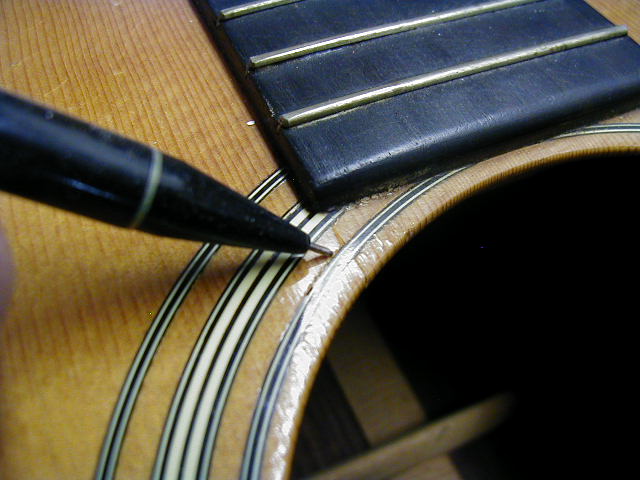 |
Here's the small crack from the outside. It's nothing to get
upset about yet, but the fact that there is the start of a crack is
something to nip in the bud before it gets worse. My preference
here would be to remove the popsicle brace and install a trapezoid brace
running from the neck block to the large soundhole brace, with grain
running parallel to the top. This is how severe cracks like this
one are fixed, so I consider my brace as a "pre-fix", and it still keeps
the upper bout free to vibrate, which the
popsicle brace does not. |
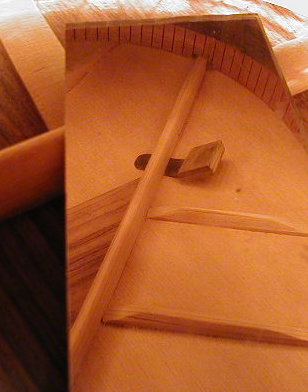 |
I check for loose braces while inside the guitar. This is a
different guitar than we've been looking at, but here is an obviously
loose brace. There's no crack in the brace so this is not a big
problem- just glue it and clamp it. Check top and back braces. |
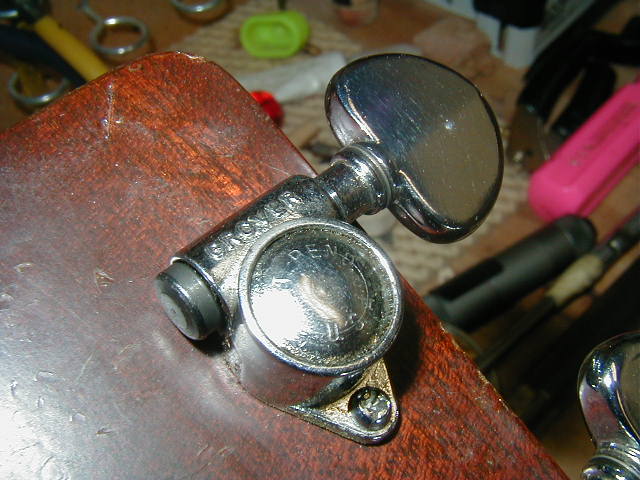 |
Here's the stock Grover Rotomatic tuner. I hate these things.
They've got screws and bushings galore and they're very heavy.
This Rotomatic is very loose. The cap will be pulled back in when
I tighten the screw inside the tuner button, but the pressure washer on
the shaft is flattened and not doing its job. My preference is to
replace these things with open back Grover 18:1, Gotoh, or Waverly tuners. |
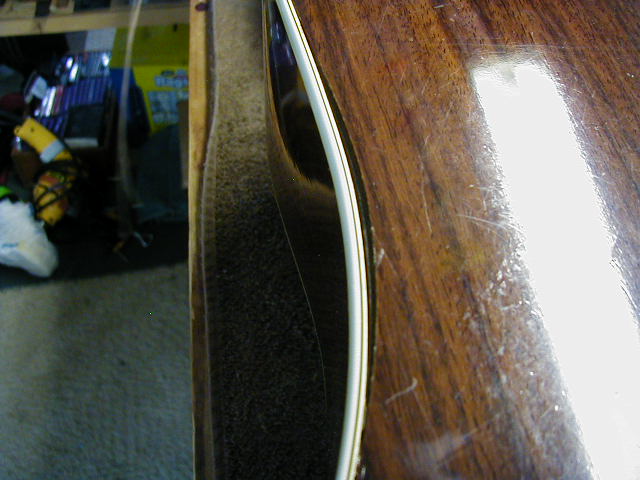 |
Check for loose binding. Binding tends to shrink over time and
will either break or pull loose. That's what has happened here.
The binding has pulled away from the body and won't go back down w/out a
fight. |
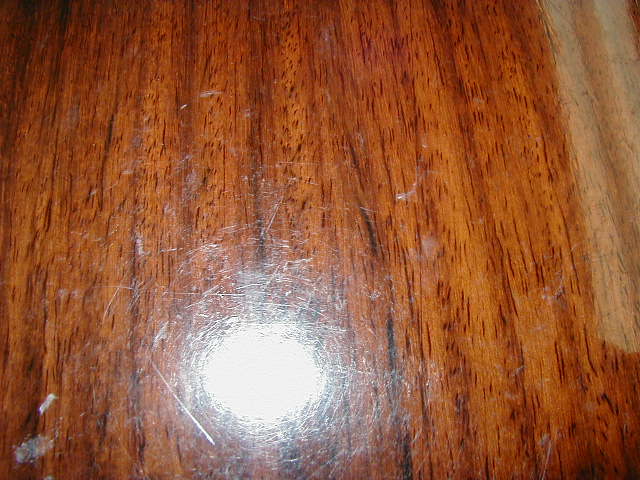 |
On the upside, the early Indian RW guitars had some nice wood with a
generally brighter and snappier tap-tone than more modern wood.
I've found this "pepper speck" wood to be pretty good sounding stuff. |
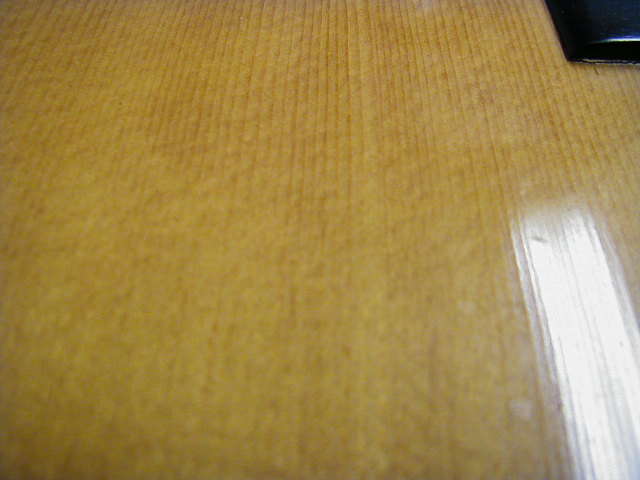 |
And here's a shot of the top grain. |
It adds up, but there is a lot of sound in these guitars once the problems
are fixed. They'll sound a lot like an HD-28 or D-18 with 30-40 years of
age.